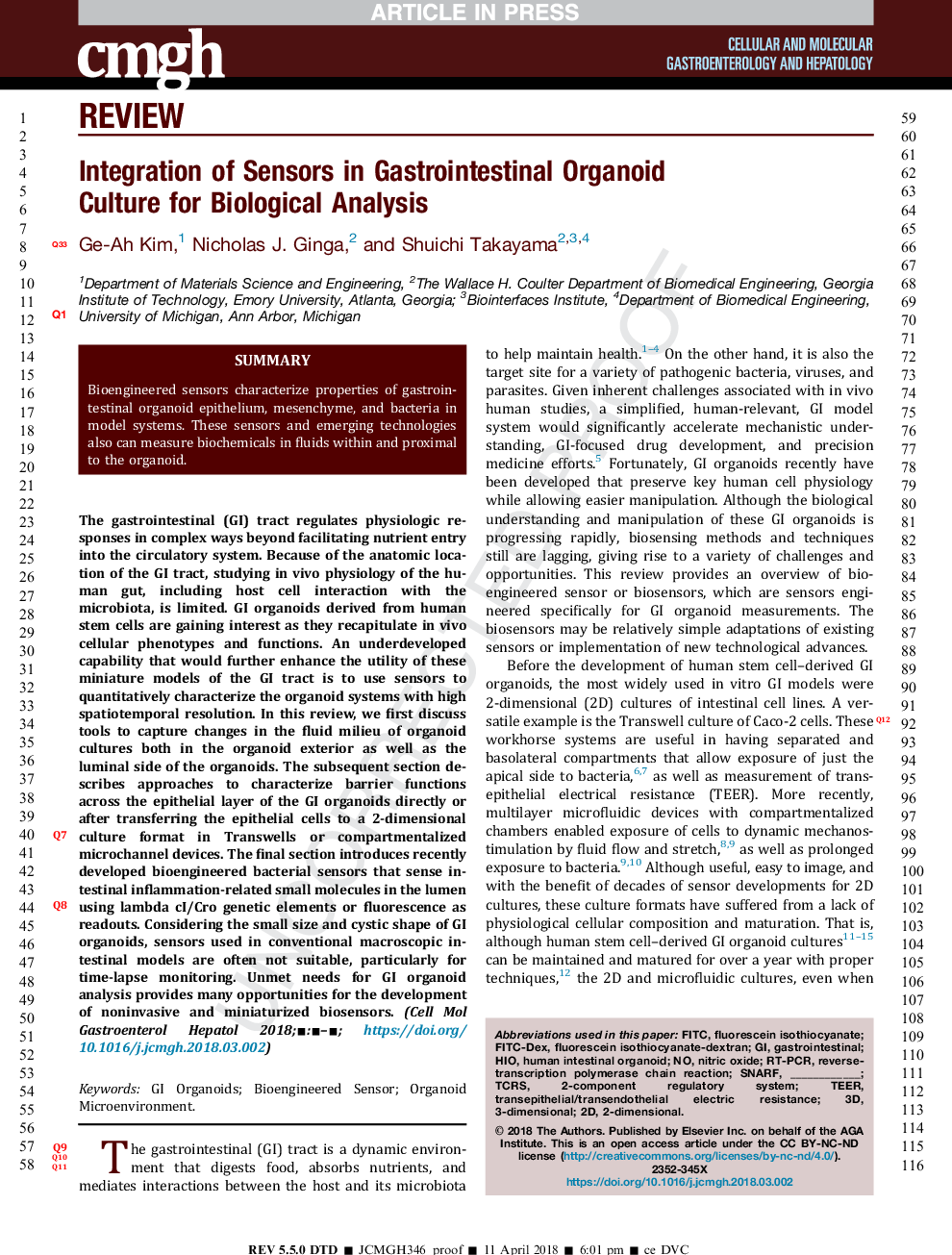| Article ID | Journal | Published Year | Pages | File Type |
|---|---|---|---|---|
| 8376094 | CMGH Cellular and Molecular Gastroenterology and Hepatology | 2018 | 10 Pages |
Abstract
The gastrointestinal (GI) tract regulates physiologic responses in complex ways beyond facilitating nutrient entry into the circulatory system. Because of the anatomic location of the GI tract, studying in vivo physiology of the human gut, including host cell interaction with the microbiota, is limited. GI organoids derived from human stem cells are gaining interest as they recapitulate in vivo cellular phenotypes and functions. An underdeveloped capability that would further enhance the utility of these miniature models of the GI tract is to use sensors to quantitatively characterize the organoid systems with high spatiotemporal resolution. In this review, we first discuss tools to capture changes in the fluid milieu of organoid cultures both in the organoid exterior as well as the luminal side of the organoids. The subsequent section describes approaches to characterize barrier functions across the epithelial layer of the GI organoids directly or after transferring the epithelial cells to a 2-dimensional culture format in Transwells or compartmentalized microchannel devices. The final section introduces recently developed bioengineered bacterial sensors that sense intestinal inflammation-related small molecules in the lumen using lambda cI/Cro genetic elements or fluorescence as readouts. Considering the small size and cystic shape of GI organoids, sensors used in conventional macroscopic intestinal models are often not suitable, particularly for time-lapse monitoring. Unmet needs for GI organoid analysis provides many opportunities for the development of noninvasive and miniaturized biosensors.
Keywords
Related Topics
Life Sciences
Biochemistry, Genetics and Molecular Biology
Biochemistry, Genetics and Molecular Biology (General)
Authors
Ge-Ah Kim, Nicholas J. Ginga, Shuichi Takayama,
